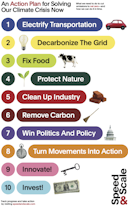If you're working to get your own climate tech company off the ground, here are some thoughts:
Before you start coding... consider building your product's v1 in a no-code platform such as Airtable or Softr. You can iterate a lot more quickly this way. You can always rewrite your product in a traditional full-code manner once you achieve product-market fit.
Example projects
Examples of climate tech projects that I (Steven Zhang) have helped build using no-code:
Stripe's frontier carbon dioxide removal knowledge database is built on Softr. Case study from Softr here.
Pre-product-market-fit, version 1 of ClimateTechList 🙂, built on Webflow and Softr.
Boston Climate Tech's newsletter and live calendar are all built and automated using Airtable. See this in-depth blog post on how I use Airtable to save hours on the newsletter every issue.
Various VC deal flow trackers for my VC friends have been built on Airtable.
Other examples of no-code climate tech products/companies built by others:
- Climesumer, a directory for sustainable living: v1 built completely in Airtable/Softr
- Kopperfield, a company working to make home electrification easier, built their v1 backend in Airtable.
Guides & Templates
I've also used low-code tools extensively in other organizations, most notably in civic tech volunteering with US Digital Response. They have some guides here and example templates here.
Need help?
By the way, I also run a no-code/low-code consultancy. Check us out here if you'd like to do a free consultation.
Even if you are writing code for your product, you can still use no-code tools to build parts of your product to iterate faster. This is sometimes called "low-code" (in contrast to the term "no-code").
Example 1. WARNTracker
When my friend Chris Talley and I launched WARNtracker, (a layoffs tracker/government records viewer), we used a traditional coding framework, Next.js, for the site but built the data tables and charts using Airtable shared views and Tableau, respectively.
Blending no-code with traditional coding allowed us to build a product from scratch in response to a discovered market/user need extremely fast: 2 days.
WARNTracker is now one of the most popular layoff trackers on the internet
Example 2. Tech For Local Law 97 website
I built the website for a climate advocacy non-profit, Tech For Local Law 97, using Notion and a low-code React library. Details in a blog post here.
Need help?
I also run a no-code/low-code consultancy. Check us out here if you'd like to do a free consultation.
If you're dealing with complex software or need to interface with hardware, check out OptionZero - a software-for-climate consulting firm that works exclusively with climate tech companies, particularly non-software founders.
If you need help building hardware, check out Synapse. They have a multidisciplinary team of 125 hardware engineers in Seattle and San Francisco. Synapse has been around for 20+ years, taking innovative physical technologies and products from concept to commercial launch. Synapse has particular expertise in taking climate technologies from lab prototypes to pilot or production units and can provide advice on specific technical challenges up to general development strategies.
They also have a podcast, Hardware to Save a Planet that focuses specifically on interviews with founders who run hardware-focused climate tech companies.
For ClimateTech has a ClimateTech Hardware Manufacturing Guide here.
Jack Fritzinger has an excellent aggregation of other resources for aspiring climate tech founders here.






